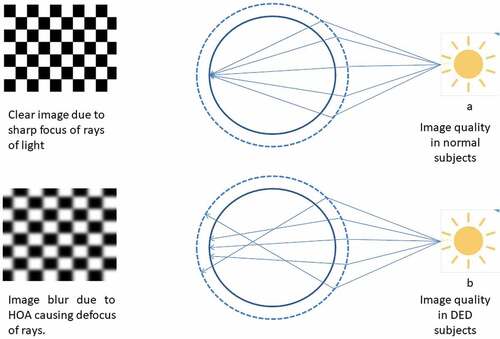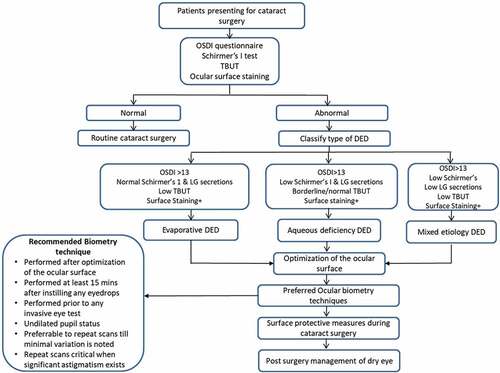Figures & data
Figure 1. Impact of optical aberrations on the image quality in DED. The image shows the image quality in normal subjects with a stable pre-corneal tear film resulting in a sharp image(a). Image b shows the scatter of light in eyes with dry eye disease (DED) resulting in higher-order aberrations (HOAs) and blurred images.

Figure 2. Algorithm for appropriate management of DED patients presenting in cataract clinics. The algorithm highlights a systematic approach in screening, evaluating, and optimizing dry eye disease (DED) in patients presenting for cataract surgery. It also discusses the recommendations for obtaining reliable ocular biometry in eyes with DED to improve the postoperative outcomes after cataract surgery.

Table 1. Inaccuracies of biometry in DED and impact of treatment.
Table 2. Effect of different topical medications on keratometry and optical aberrations in DED.
